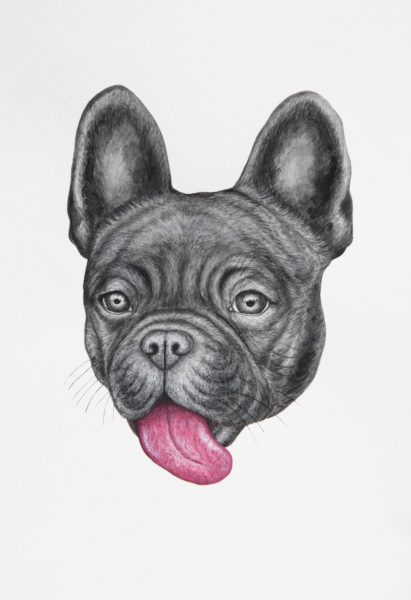
If you are new parents to an adopted pup and want to create a special work of art dedicated to them for your home, have you thought about drawing Fido yourself? Art has so many benefits for the mind and body. In fact, one study by researchers at Drexel University found that no matter what your skill level is, making art always reduces stress hormones – which makes it conducive to improving your mental health. If you have always wanted to draw but have never taken classes, know that it is possible to create a pretty artwork that is beautiful enough to frame. Just follow the tips below!
Buying Necessary Supplies
You don’t need to spend hundreds of dollars to build a basic set of supplies for sketching. A simple child’s drawing pad (with paper that is a little rougher/more resistant to pencil strokes than typical A4 printing paper), a good eraser, and a few pencils will do. When it comes to pencils, opt for different grades. Generally, pencils range in hardness from around 4H to 6B. 4H (which contains more clay) is the lightest and hardest pencil, while 6B (which has more graphite) is the darkest and softest – so it smudges more. Ideally, you should opt for one hard, one mid-range (e.g. an HB pencil) and one soft pencil. This will enable you to make clear outlines, add subtle shadow, and use darker shading where necessary as well. Often, what really gives a sketch its ‘wow factor’ is the simple interplay between dark, light, and medium-hued shadows.
Starting to Draw Dogs
Before drawing your BFF, it is a good idea to learn to draw dog proportions and anatomy in general. There are many online tutorials that can show you where to start. You might, for instance, begin with the muzzle, followed by the ears, body, then details like the paws, eyes, ‘mustache’, etc. Understanding the different proportions and anatomical differences between different breeds can help you bring your pooch to a truer light in your drawing. The eyes are particularly important because they should contain your dog’s expression, but also remain true to real-life proportion and positioning.
Bringing Your Pooch to Life
Pull your smartphone or camera out and take an array of pictures of your dog. Pick one you feel really captures their essence. You don’t have to photograph or draw the entire body. A beautiful close-up of the face, for instance, maybe more dramatic and emotion-packed than an action shot. Honing in on one part of the body will also permit you to practice drawing areas like the eyes, nose, and ears. Be prepared to make various sketches of the first picture. You will truly be your own best teacher as you refine the required features of your drawing and avoid mistakes made in previous versions.
If you love art and you feel it’s time to pay homage to your dog, why not learn to draw them from scratch? Invest in a few key items such as a drawing pad, canvas, and pencils. Watch tutorials to elicit the ideal place to start. Take loads of pictures – which will inspire you to focus on specific areas of your dog’s anatomy. As your skill level rises, you can begin to experiment with different positions and angles and even fun ‘action shots’ of your pooch playing in the Great Outdoors.